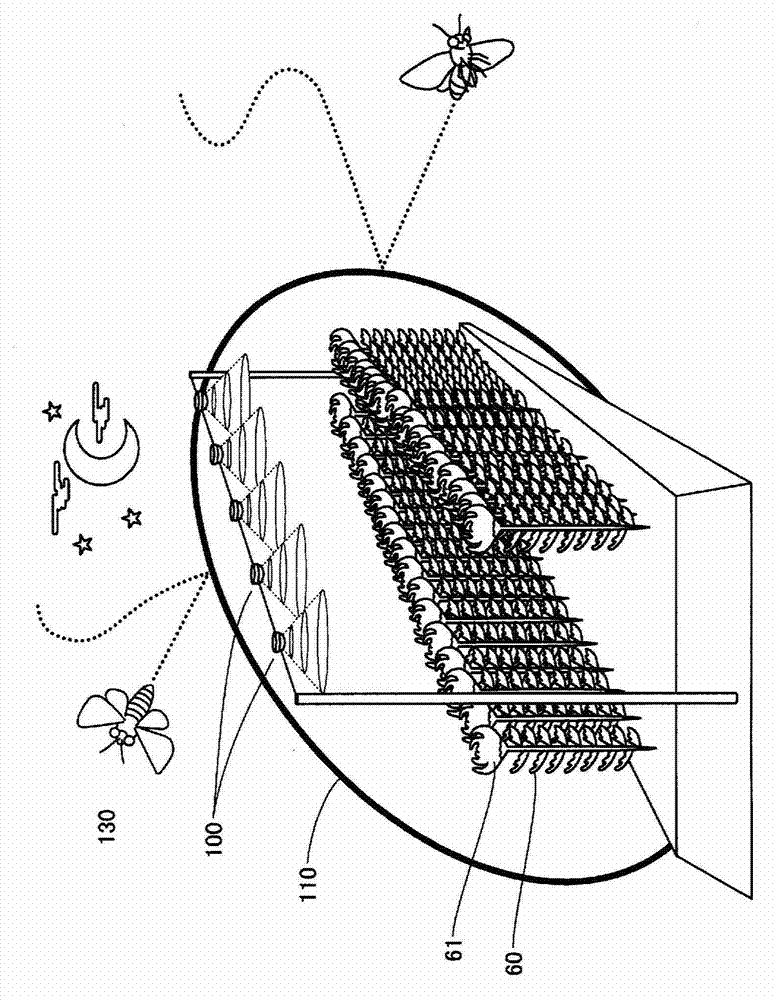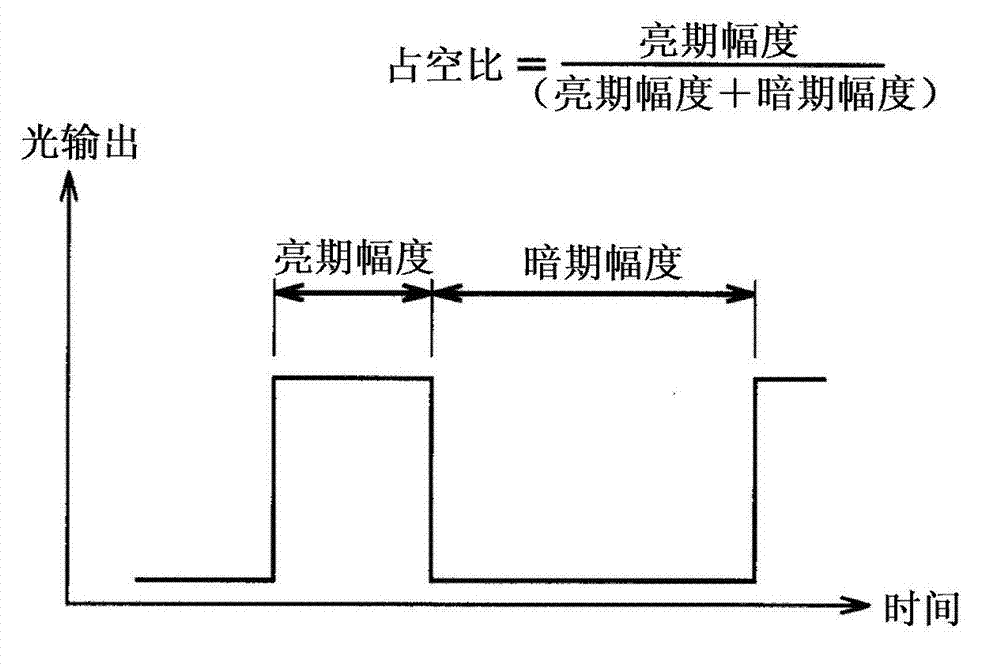Plant cultivation method using illumination, insect-repelling lighting device, and insect-repelling lighting system
A cultivation method, lighting device technology, applied in the directions of botanical equipment and methods, horticultural methods, applications, etc., can solve problems such as undocumented, and achieve the effect of avoiding flowering delay
- Summary
- Abstract
- Description
- Claims
- Application Information
AI Technical Summary
Problems solved by technology
Method used
Image
Examples
Embodiment approach 1
[0091] (concept of lighting cultivation)
[0092] figure 1 It is a conceptual diagram of the lighting cultivation in Embodiment 1 of this invention.
[0093] refer to figure 1, For example, plants such as chrysanthemum 60 (Qiu chrysanthemum) are colonized in fields (plant cultivation areas). Chrysanthemum 60 contains growing point 61 . A lighting device is provided on the field, and the lighting device is equipped with a plurality of LED light sources 100 . These LED light sources are pulsed on at night. The illumination area 110 is illuminated by pulsed lighting of the LED light source 100 . In the illumination area 110 , the adults 130 of the Noctuidae family visually recognize the light, thereby suppressing the behavior of the adults of the Noctuidae family 130 . As a result, the flying of the Noctuidae adults 130 to the field for laying eggs or mating is suppressed, and the egg laying and mating actions of the Noctuidae adults 130 are suppressed. As a result, the da...
no. 2 Embodiment approach
[0141] In Embodiment 1, it was shown that the pulse lighting of LED can prevent the flowering delay of a chrysanthemum while having an anti-moth effect. On the other hand, in the case of monotonous pulse lighting, the action inhibition of Noctuididae was also sometimes weakened due to the adaptation of pulse lighting. In this embodiment, this point will be described first.
[0142] (data showing adaptation of noctuid)
[0143] 16 male cotton bollworms were tested using a yellow fluorescent LED light source. Figure 10 Actigraphy shown, with irradiance set to 50mW / m 2 , Lighting at night under the pulse conditions of 20 ms in bright period and 80 ms in dark period to investigate the number of sensor occlusions accompanying flight. exist Figure 14 The results are shown in . Figure 14 It is a graph showing the change of flight activity in the dark period according to different ages. The vertical axis is the number of sensor occlusions, and D1 to D5 on the horizontal axis a...
Embodiment approach 3
[0170] In Embodiment 3, the growth status of the cultivated chrysanthemum and the state of damage by noctuid moths were investigated in the "no-treatment zone", "asynchronous lighting zone" and "synchronous lighting zone". The following shows the results of an experiment in which the growth status of chrysanthemums was observed when "plurality of asynchronous light sources" and "synchronous light sources" were used.
[0171] (Experiment 1: Comparison of no treatment area and non-synchronized lighting area)
[0172] In this experiment, the yellow chrysanthemum "Jingzhiqi" was cultivated in the non-treatment area and the asynchronous lighting area, and the cultivation status of each chrysanthemum and the damage status caused by the noctuid moth were compared. In the no-treatment area and the non-synchronized lighting area, fungicides were used according to farm practices and insecticides that had less impact on Noctuidae were used, but acaricides that had no impact on Noctuidae ...
PUM
 Login to View More
Login to View More Abstract
Description
Claims
Application Information
 Login to View More
Login to View More - R&D
- Intellectual Property
- Life Sciences
- Materials
- Tech Scout
- Unparalleled Data Quality
- Higher Quality Content
- 60% Fewer Hallucinations
Browse by: Latest US Patents, China's latest patents, Technical Efficacy Thesaurus, Application Domain, Technology Topic, Popular Technical Reports.
© 2025 PatSnap. All rights reserved.Legal|Privacy policy|Modern Slavery Act Transparency Statement|Sitemap|About US| Contact US: help@patsnap.com



